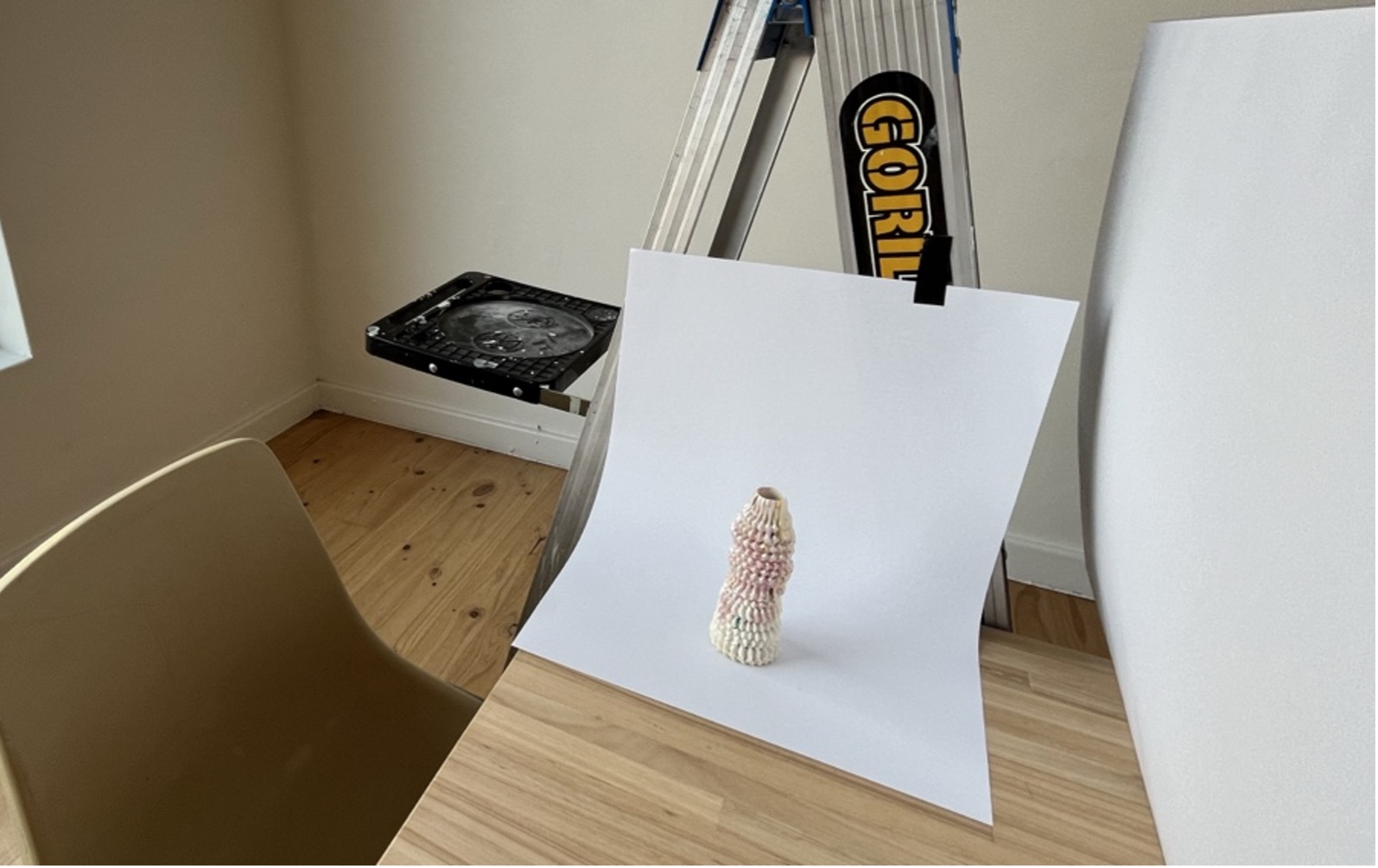Documenting Your Work for Applications
Having good quality images of your work is incredibly important. This guide offers tips and tricks to ensure artwork is documented as well as possible, without the need for fancy gear or specialist knowledge.
When applying for grants and professional development opportunities such as mentorships, residencies or other programs, it is regularly a requirement to provide support images of your practice. Images are often one of the first aspects of applications viewed by assessors, so it’s important your work is represented in the best light possible.
This toolkit focuses on documenting your artwork for applications. Once you are confident with the basics, this knowledge can be expanded upon to photograph artworks more creatively for social media, your website, marketing material and beyond.
What you need:
- Camera or phone
- Available space for the set up – table or wall
- Window with good natural light
Optional equipment:
- Tripod
- Roll of white paper
- White cardstock

Set up:
It’s important to place your artwork on a neutral, uncluttered background. All focus should be on the artwork, not studio surroundings or other pieces. For applications, the aim is to isolate and showcase the piece of work clearly in its entirety.
Lighting:
Lighting is the most important element that can make or break a photograph. Ideally, use bright, indirect natural lighting from a window or doorway as your light source. Avoid direct sunlight as it will be too harsh. Don’t mix light sources – if you have an indoor set up using natural light from a window, turn off the overhead lights.
Light too bright? Hang a thin white sheet in front of the window, or tape up white paper to diffuse the light.
Light too strong from one direction? Use a piece of white card to reflect the light back onto your object and even the spread of light. The white card will bounce the light back across the object. Use lighting and shadows to your benefit to give a sense of depth and highlight texture to 3D artwork.
Photographing 2D work:
Hang your work on a white/neutral wall near the light source. Ensure the piece is parallel to the camera to avoid it appearing skewed or distorted. Using a tripod, the camera’s internal settings or a spirit level can be beneficial for achieving this. You may want to recruit a helper to hold a piece of white card which will bounce light evenly back from your light source.
Photographing 3D work:
Set up on a table or other stable surface near the light source. Use a roll of white paper to create a seamless backdrop, or simply place a piece of neutral paper underneath the object and use a white wall for the backdrop. A seamless backdrop is more professional, but not a dealbreaker. Don’t forget to take close-ups and photograph all angles of the artwork.
Tips for using your Phone:
Look in your camera settings and turn on the ‘grid’ feature to remain level with the artwork. Let the grid on the screen guide you. Recommended editing apps include Snapseed, VSCO and Canva. Don’t go overboard with editing your photos. Keep it simple and crop close to your artwork, straighten if needed, and only adjust brightness or contrast if necessary.
Resources:
SALA: How to photograph your work
Jackson’s: How to create the best digital photographs of your artwork
AAPGH: Tips for photographing your artwork
Guildhouse Community and Accredited members are eligible for Advice Bank sessions. Discuss a range of topics with Guildhouse’s experienced art professionals, including; grant funding applications, professional documentation, marketing, communications, artist opportunities and more. Contact us for more information.
